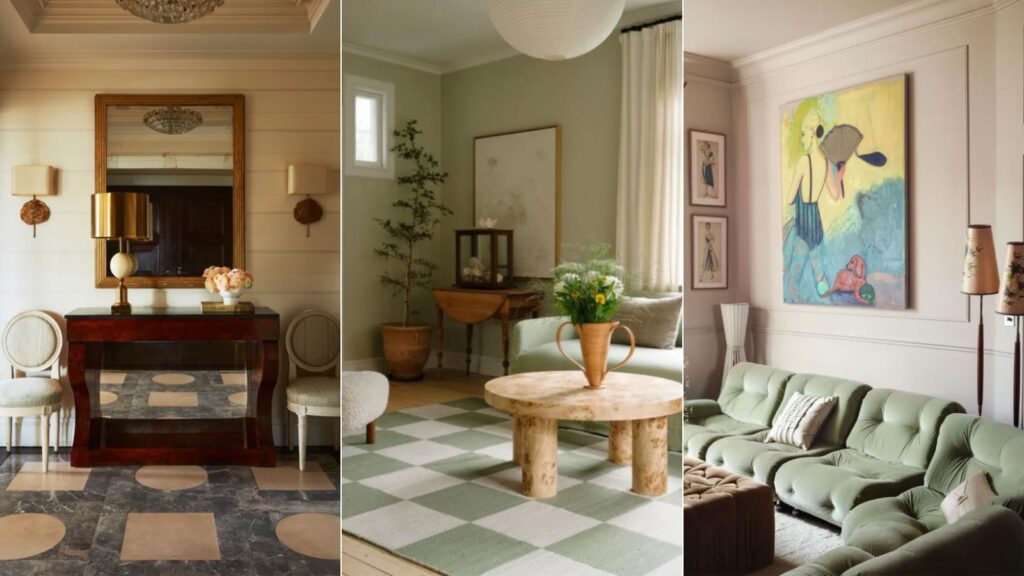Achieving balance in interior design is about more than just arranging furniture. It involves harmony between colors, textures, proportions, and personal style. A balanced space feels inviting, calming, and cohesive, even when it blends different influences or bold statement pieces. Whether you’re starting fresh or refining an existing room, understanding the principles of balance can help you create interiors that look polished while still feeling like home.
Understanding the Concept of Balance
Balance in design refers to the visual distribution of elements so that no single feature feels overpowering. It doesn’t always mean perfect symmetry, though symmetry is one way to achieve it. Instead, balance can be symmetrical, asymmetrical, or radial. Symmetrical balance mirrors elements on each side of a central axis, while asymmetrical balance uses different items of equal visual weight to create interest. Radial balance, less common in interiors, radiates from a central point, such as a circular table surrounded by evenly spaced chairs.
Choosing the Right Color Palette
Colors play a major role in balancing interiors. Neutral tones often serve as a grounding base, while accent colors can add vibrancy. A good rule of thumb is the 60-30-10 principle: 60% of the room in a dominant color, 30% in a secondary shade, and 10% in an accent tone. This distribution ensures that one color doesn’t overwhelm the space.
If you love bold hues like emerald green or deep navy, balance them with lighter shades or natural textures, such as wood and linen. This contrast prevents the room from feeling heavy and keeps the eye moving smoothly across the space.
The Role of Textures and Materials
Balance isn’t only about sight but also about touch. A well-designed room combines smooth, soft, rough, and natural textures in a way that complements the overall aesthetic. For example, a sleek leather sofa pairs beautifully with a knitted throw or a rustic wooden coffee table. Introducing a mix of textures creates layers of interest and keeps the space from appearing flat.
Materials should also reflect lifestyle needs. Families with children or pets may prefer durable fabrics and stain-resistant finishes, while others may prioritize luxury finishes like velvet or marble. Choosing wisely ensures beauty and practicality coexist.
Using Rugs to Anchor the Space
Floor coverings are essential tools for establishing balance in a room. Rugs not only define areas but also add warmth, texture, and cohesion. Large rugs, in particular, can unify furniture arrangements and prevent spaces from feeling fragmented. For example, 9×12 rugs are ideal for living rooms or open-plan areas where you want to anchor seating or dining zones. Their size helps tie together multiple pieces of furniture, creating a harmonious layout that feels intentional rather than cluttered.
When selecting a rug, consider both pattern and color. A patterned rug can bring personality to a neutral space, while a solid rug can ground bold furniture choices. Balance comes from ensuring the rug complements surrounding elements rather than competing with them.
Proportions and Scale
Furniture scale is often overlooked but is vital for a balanced interior. A large sectional sofa may overpower a small living room, while petite furniture in a spacious area may look lost. The key is proportion; choosing pieces that suit both the size of the room and each other.
One trick is to vary heights within the room. For instance, balance a tall bookcase with a lower sofa or console table. This variation creates rhythm and keeps the eye engaged without overwhelming one side of the room.
Conclusion
Creating a balanced interior is about more than design trends; it’s about crafting a space that feels harmonious and livable. By paying attention to color palettes, textures, proportions, and grounding elements like rugs, you can achieve a cohesive look that suits your style and lifestyle. The result is a home that feels not only visually appealing but also truly welcoming.



